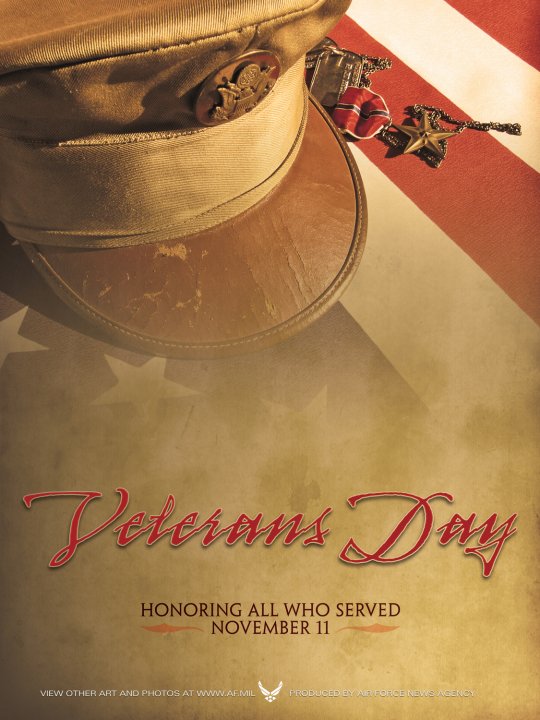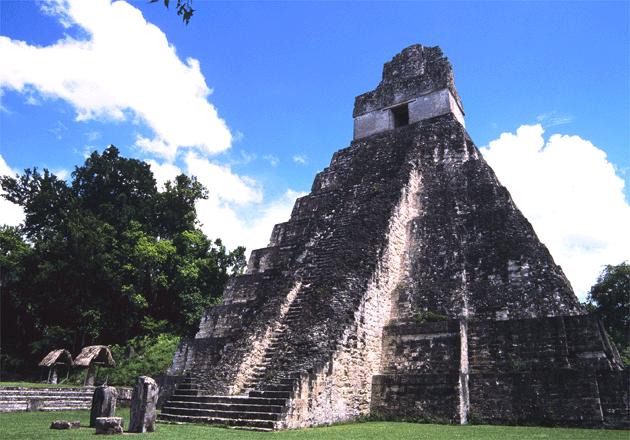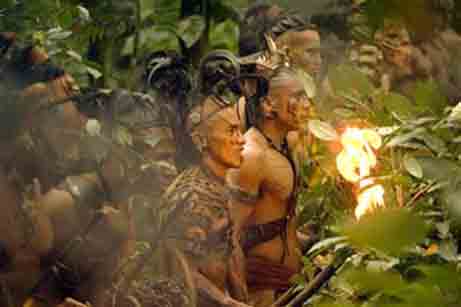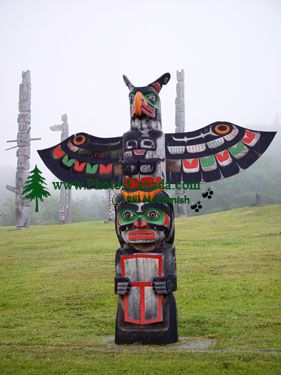
Tuesday, December 16, 2008
Friday, December 12, 2008
7th G World History Semester Exam Study Guide 12/12/08
http://docs.google.com/Doc?id=dhx4bxv_24ff7zjtdm&hl=en:
Extra Credit opportunity: Students may turn in a completed study guide for 5 Extra Credit Points.
Due: the day of your semester exam.
Binder Check on Monday, December 15th. Checking for planner pages, parent signatures, and assignments.
Semester exams next week, December 16 through 19.
6th Grade World Geography Study Guide Semester Exam
http://docs.google.com/Doc?id=dhx4bxv_21dfqmskgs
Monday, December 8, 2008
6th Grade World Geography 12/8/08

7th Grade World History 12/8/08
Classwork: Vocabulary: Silk Roads, trans-Eurasian, cultural diffusion
Read along with reading guide on cd, starting at page 277.
Study guide--students have the opportunity to complete the Unit study guide in class.
Homework: Use your study guide to study for the test on Wednesday.
Sunday, December 7, 2008
7th Grade World History: India/China Unit Test---Study Guide
http://docs.google.com/Doc?id=dhx4bxv_20d3dmtvc7
Thursday, December 4, 2008
6th Grade World Geography 12/4/08
Classwork: Students had an opportunity to make up work in their work book. pages 48-57.
Class and group discussion, plan for Mexican food day.
Students research Mexican food and recipes online.
Begin answering the section assessments as part of review.
Homework: Choose your recipe---due Friday
Chapter 7 test, Tuesday, December 9th -----Study Guide available here: http://docs.google.com/Doc?id=dhx4bxv_19hr2qpcgk&hl=en
Wednesday, December 3, 2008
7th Grade World History 12/3/08
Classwork: Journal, vocabulary---Oracle bones, Mandate of Heaven, pictograph, dynastic cycle
Powerpoint presentation/notes-- geography of China. Click here for map website of Chinese dynasties: http://www.artsmia.org/art-of-asia/history/shang-dynasty-map.cfm
Computer: Students explore aspects of china's geography at this website: http://china.mrdonn.org/geography.html
Homework: Unit test India/China, Wednesday December 10th
6th Grade World Geography 12/4/08
Focus-- Mexico, Chapter 7,
Classwork: Students complete workbook pages 56-57
Students had time to check over all their work on chapter seven work book pages and make up any work they missed during the last week.
Homework: Mexican Food Day--Due: Monday December 8th. full directions for this fun activity can be found at http://docs.google.com/Doc?id=dhx4bxv_18dq6rqbg9
Chapter 7 test, Tuesday 9th December.
Tuesday, December 2, 2008
7th Grade World History 12/2/08
Classwork; Reading study guide and textbook, Chapter 7, Lesson 4
Class discussion Indian contributions to the modern world (yoga, food, mathematics)
Homework: students should review topics covered during class.
6th Grade World Geography 12/2/08
Classwork: Students work in pairs to complete one section of work book and answer questions. When complete students re-group with other students to teach each other the information they have learned.
Homework; If you did not finish work in class finish WB 50-54. Due Wednesday.
Thursday, November 20, 2008
Ch 6, Latin America study guide, 6th Grade World Geography
World
Geography, Chapter 6 Study Guide, Latin America
The Inca were
experts at building in stone. A good example of this is the city of
___________ ________The Aztecs created
their own land for farming, these were called _____________.In 1521 Hernan
Cortes conquered the _____________ nation.The __________
developed a _______________________ writing system.The Amazon Rain
forest which is located in ____________ America has been impacted by
_______________.The warm current
that effects the winds in Latin America is called ____________.The Amazon river
is so big because it has many _________________________.The Inca ruler who
was defeated by Pizarro ________________________Most of Latin
America lies within the ____________________ climate zone.The Columbian
Exchange refers to
___________________________________________________________________between
______________________and ___________________.The land area that
lies between 23.7 degrees North and 23.7 degrees South is called
_________________________.Two types of
natural disasters that occur frequently in Latin America are
_______________________ and _________________________.The first
Europeans to come in contact with the people of Latin America came
from ____________________ and _______________________________.The country with
the larges land area in Central American and the Caribbean is
_________________________________.
Challenge:
Find out how many
volcanoes there are in Central and South America.
6th Grade World Geography
Classwork: Study guide/ students quiz each other from the study guide questions
Students watch video clip on geography of the Caribbean islands.
Homework: Study for the test tomorrow!!!!!
7th Grade World History 11/20/08
Classwork: Study guide.
Homework: study for the test tomorrow!!!!!
World Religions Study GuideAnswers 11/20/08
World
Religions—Study Guide
The Om is a sacred
symbol in which world religion? HINDUISMWho is the founder
of Hinduism? NO KNOWN FOUNDERHinduism is a
polytheistic religion. True/False TRUEHinudism
originated in which Asian country? INDIAHindus believe we
each live many lives. This belief is called REINCARNATIONWhat is Karma?
YOUR DEEDS WILL BE RETURNED TO YOU IN KINDThe Caste System
is part of Hindu belief and practice, True/False. TRUESiddartha Gautama
founded which religion? BUDDHISMWhat are the 3
symbols of Buddhism? LOTUS FLOWER, WHEEL, IMAGE OF BUDDHAAccording to
Buddhists how can a person achieve Nirvana? THROUGH ENLIGHTENMENTWhat are the 4
noble truths?SUFFERING EXISTS, WE SUFFER BECAUSE WE WANT, WE CAN
STOP SUFFERING BY NOT WANTINGThe eightfold path
is a list of rules or guidelines by which Buddhists should live
their lives. True/False. TRUE
What is the holy
book of Buddhism? TIPITAKAName 2 countries
in which Buddhism is one of the major religions.INDIA, TIBET, CHINAThe founder of
Judaism is _ABRAHAMJudaism is a
monotheistic religion. True/False. TRUEWhat is the symbol
of Judaism? STAR OF DAVIDWhere do people of
the Jewish Faith worship? SYNAGOGUEWhat is the Jewish
Holy Book? TORAHIn Judaism what
is meant by the term “Sabbath.?” HOLY DAY/DAY OF RESTWho is the founder
of Christianity?JESUS OF NAZARETHWhat are some
symbols of Christianity? CROSS, DOVE, FISHAccording to
Christians who is Jesus? THE SON OF GODWho is the founder
of Islam? MUHAMMEDIn which country
does Islam have its origins? SAUDI ARABIAWhat is the holy
book of Islam? QU’RANWhat is the Muslim
house of worship called? MOSQUEIslam is a
monotheistic religion. True/False. TRUE
Wednesday, November 19, 2008
7th Grade World History 11/19/08

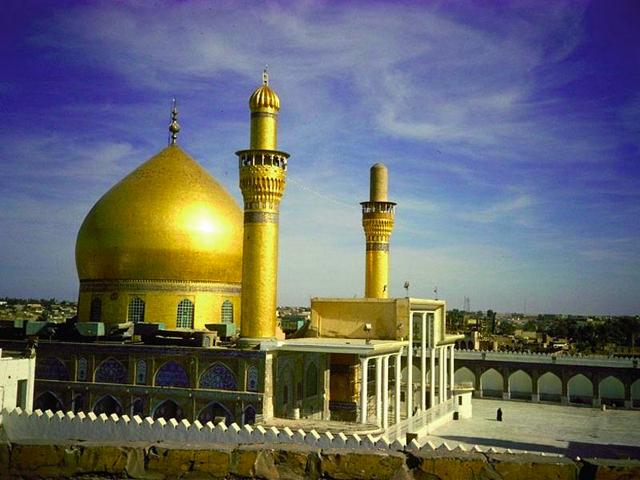
6th Grade World Geography 11/19/08
Tuesday, November 18, 2008
7th Grade World History

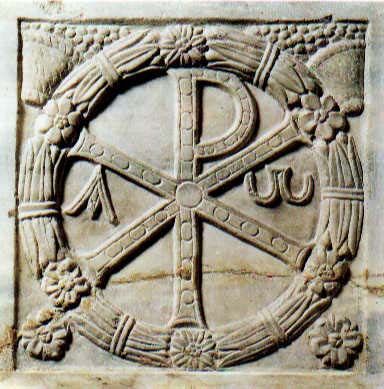
Monday, November 17, 2008
7th Grade World History 11/17/08
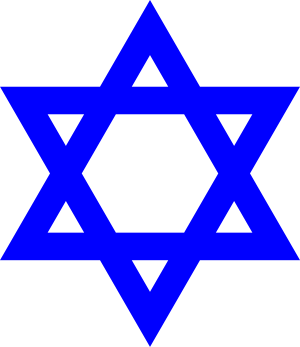
Where did Judaism originate from?
What do Jews believe?
Who is the founder of Judaism?
Who is Abraham?
What is the Symbol of Judaism?
What is a Menorah?
What is a Mezuzah?
Where do Jews worship?
What are the spiritual leaders called?
What is the Jewish Holy Book called?
What is the Tanach?
What is the most important day of the week for Jews?
What happens on the Shabbat in a Jewish family?
What special things do Jews wear?
What is a bar mitzvah and a bat mitzvah?
What do Jews call marriage?
What are the different types of Jews?
What is Kosher food?
What are the main Jewish festivals?
Sunday, November 16, 2008
7th Grade World History 11/14/08


You may remember that The Buddha taught that all living things suffer. Buddhists call this suffering duhkha. The Buddha taught his followers THE FOUR NOBLE TRUTHSand THE NOBLE EIGHTFOLD PATH. (The Four Noble Truths
The FOUR NOBLE TRUTHS are:
1. Duhkha is everywhere, all the time;
2. Duhkha is caused by greed and selfishness;
3. Greed and Selfishness can be ended;
4. The way to end Greed and Selfishness is to follow the Noble Eightfold Path.
THE NOBLE EIGHTFOLD PATH
The Buddha said that you cannot reach Nirvana by living a life of luxury and you cannot reach Nirvana by living a life of deliberate poverty and starvation (Remember: he had tried both). He taught his followers that they should follow a Middle Way between the two extremes.
He said that the Middle Way had eight parts and that to make it work you must follow all of them. This is why The Buddha’s Middle Way is known as the Noble Eightfold Path.
Right Meditation
Right Understanding
Right Speech
Right Self-awareness
Right Effort
Right Livelihood
Right Action
Right Thought
The Noble Eightfold Path
The eight parts of the path fall into 3 groups:
Group
Step of the Path
What It Means
Wisdom
Right Understanding
You must understand the Four Noble Truths.
Right Thought
You must think about the kind of life you lead and make a commitment to live in a caring and unselfish way.
Behaviour
Right Speech
Always speak in ways that are kind, truthful and not hurtful to yourself or other people.
Right Action
Behave in ways that respect living things, respect other people’s property, respect other people’s feelings and respect yourself.
Right Livelihood (job)
Do a job that does not lead to harming others. Buddhist believe that five kinds of job cause harm and should be avoided. They are:
· trade in deadly weapons· trade in animals for slaughter· trade in slavery · trade in intoxicants· trade in poisons
Mind
Right Effort
Do your best to avoid bad things and do good things:
· Make the effort to avoid evil; · Make the effort prevent evil;· Make the effort to do good to others;· Make the effort to encourage good in others.
Right Self-awareness
Control your mind so that you see things clearly.
· Be aware of your own body and how you move.· Be aware of your feelings. Aim for pleasant, calm feelings.· Be aware of your thoughts. Be in control of them. · Be aware of the world around you.
Right Meditation
The Buddha gained enlightenment by meditation. So can you.
Activity
(Write any answers as sentences)
1. Look at page 1 again. Write one or two sentences to explain what The Buddha meant by “The Middle Way”.
2. Draw a diagram showing the eight steps of The Eightfold Path. (Buddhist often use the image of a wheel with eight spokes).
3. Do you think that it would be difficult to follow The Eightfold Path? Would any of the steps be easier to follow?
4. Which steps on the path would tell a Buddhist
to do his or her best not to call other people names?
to be kind to animals?
not to kill?
not to drink alcohol or take drugs?
5. Look at this summary of The Ten Commandments. Do any of them agree with The Eightfold Path? Can you match any of the commandments with any of the steps? Write about any of the matches you can find.
A Summary of The Ten Commandments
1. I am the Lord your God.
2. You must not worship any other gods.
3. You must not use God’s name badly.
4. Remember to keep the sabbath.
5. Respect you parents.
6. Don’t kill anyone.
7. Be faithful to your husband or wife.
8. Do not steal.
9. Do not tell lies about people.
10. Do not be jealous of the things that other people have.
Wednesday, November 12, 2008
7th Grade World History 11/12/08
6th Grade World Geography 11/12/08
Monday, November 10, 2008
7th Grade World History 11/10/08
Classwork: Students listen to each others' presentations and see their African masks!
Projects were due Friday 11/7/08-- but students could not present because of career day!
Homework: Remember and honor veterans on Tuesday.
---Watch out for pictures of African mask project coming soon!----
6th Grade World Geography 11/10/08
Wednesday, November 5, 2008
7th Grade World History 11/05/08
Class work: chapter 9 test--
word search
silent reading
Homework: African mask project due on Friday!!!
6th Grade World Geography 11/05/08
Classwork: complete study guide for test on Friday
Homework: Use your study guide, work book and text to prepare for the chapter 5 test on Friday.
Tuesday, November 4, 2008
7th Grade World History 11/04/08
6th Grade World Geography 11/04/08

Monday, November 3, 2008
7th Grade World History

6th Grade World Geography 11/03/08
Classwork: Students present their projects to the class and take questions and comments.
Homework: No homework
The students did a fantastic job with their projects! So many different ideas and ways of presenting the same information. Well done Ms. Shubrick's 6th graders!
Friday, October 31, 2008
Thursday, October 30, 2008
7th Grade World History
6th Grade World Geography
Classwork: Guided reading text p.128-131.
Guided Reading work book p. 36-37
Vocabulary worksheet---
Homework: Projects due Monday!!
Vocabulary worksheet due Monday!
Wednesday, October 29, 2008
7th Grade World History

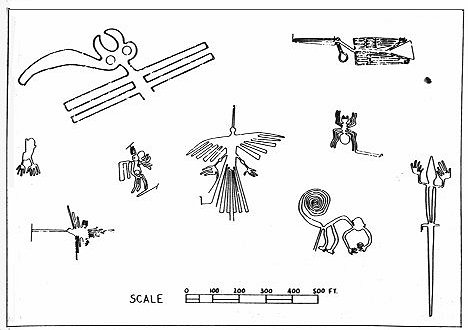
6th Grade World Geography
Classwork: Students read along with the text book. Class Q and A---compare and contrast the governments of Canada and the United States.
Complete work book pages 34-35.
Homework: If not finished in class finish work book pages 34-35.
Tuesday, October 28, 2008
7th Grade World History
Classwork: Notes/PowerPoint -- Geography of the Americas, contrasting the climate and physical geography of North and South America.
Homework: No written homework.-----review material covered in class.
6th Grade World Geography
Class work: Read text section in class, Class discussion comparing Canadian government and society with U.S.
Complete Work book pages (pages correspond to Chapter 5, Section 1)
Homework: No written homework---review section in text.
Friday, October 24, 2008
7th Grade World History
Classwork: Chapter 6 crossword,
Response Card practice quiz--one on one challenge.
Computer flip cards.
Homework: Study for chapter 6 test on Monday.
Keep your crossword puzzle study guide to help you study. Turn in cross word with your test on Monday for extra credit! Remember you must turn it in with your test paper and your name must be on it in order to get the extra credit.
6thGrade World Geography
Class work: Study guide---- completed study guides can be turned in with your quiz paper on Monday for an extra credit grade!!
Homework: Use your study guide you completed in class to help you review all of chapter 4. Remember to get the extra credit for your study guide you must turn it in with your test---and you must have your name on it at the time!
Chapter 4 test on Monday..
Note: after 7th period class I found 5 study guides left behind in the classroom. None of the study guides had a name on them. Unfortunately those students will not have the benefit of the study guide to help them prepare for the test. But, you can still use your text book and also your reading study guide work book!!!
Wednesday, October 22, 2008
7th Grade World History
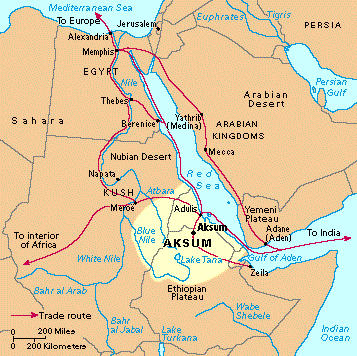
6th Grade World Geography
Class work: Reading study guide p. 26-27. Students answer questions as a group. Class discussion on market economy, factors of production and difference between goods and services.
Home work: Answer work sheet on the Economy. Due tomorrow--you can use your work book AND your text book pages 102-107 to help you.
7th Grade World History--African Mask Directions
Mask Project/Research-- Due: Friday, November 7th. 2008.
(Your grade will be made up as follows: 40% research and 60% your mask)
Look through the following websites to find the mask you wish to re-create and research. When you have completed your research you will make or recreate the mask of your choice. On a separate sheet of paper, do the following:
1.
Write down the URL where you found the mask.
2.
If the mask has a name, write it down.
3.
Describe how the mask looks like (color, size, design, features). Write in complete sentences.
4.
Draw a sketch of the mask you choose. Make sure to include features and colors.
http://www.dia.org/collections/aonwc/africanart/1988.193.html
http://www.culturekiosque.com/art/exhibiti/masks.htm
http://cti.itc.virginia.edu/~bcr/African_Mask.html
http://www.arttribal.com/
Now that you found your mask, you will need to look for and gather information about the tribe where your mask is from. Answer the following questions in your research:
1.
What tribe is this mask from? (5 points)
2.
Where is this tribe located in Africa? (Name the country and village/city. (5 points)
3.
Find out more about the location of the tribe. What is the climate like? Is the area located near a body of water, mountains, desert, etc.? What is the population?
(5 points)
4.
Find more facts about your tribe. For example, you might find information about the history of the tribe, lifestyle, language, worship, etc. (5 points)
http://www.zyama.com/
http://users.telenet.be/african-shop/mask-information.htm
Materials (the following are possible suggestions for material you might use—you can also use paper mache if you wish, and remember you will need materials for decoration.)
newspaper and brown paper bags, card or cardboard
wall paper paste
masking tape
file folders/cardboard
paint (various colors)
glue, scissors,
varnish
feathers (varies)
rope (varies), straw
raffia (varies)
beads (varies)
other adornments
Your projectTo make your project complete, you need to produce a write-up of your tribe and the mask.
Your written piece is comprised of 2 main parts:
1.
Location- Write 1 paragraph that describes the country where your ethnic group is located. Include the geographical information and interesting facts. (10 points)
2.
Ceremonial Use- Write 1 paragraph that describes your ethnic group and the use of the mask. (10 points)
Example
Please sign and date the following to show you have read and understand the directions and the due date.
Student name/signature_________________________________, Date, _______________________
Parent/guardian name/signature ___________________________, Date, ______________________
6th Grade World Geography-Directions: 3 branches of government poster project


6th Grade World Geography---The Government of the United States 10/20/08, Due Monday 11/03/08
Students will work individually to create a poster explaining the three branches of government. Project is due Monday, November 3rd, 2008.
You are going to make a poster (not a 3 sided display board) no larger than 24” X 36” illustrating and explaining the 3 branches of government.
1. Your poster must include a title “The three branches of government.”(10 points)
2. Include one illustration ( hand drawn and colored or printed) for each of the three branches of government; the Executive, The Legislative, and The Judicial.(20 points)
2. Label each of the three branches clearly.(10 points)
3. State the function of each branch (for example the judicial branch decides if laws agree with the U.S. Constitution.(25 points)
4. Show how each branch is related to the other two. You can use a diagram, a written description or a chart to show this relationship.
(20 points)
5. Make your poster clear, colorful, and neat—so that it is easy to read the information, and visually pleasing to look at. (15 points).
6. Please sign and return the section below to show you have read the directions and understand the requirements and the due date.
Please cut along the line and return the section below.
I have read and understood the directions for making the poster “Three branches of government.” I understand this project is due Monday, November 3rd 2008.
Student Signature______________________________, Date___________
Parent Signature_______________________________, Date___________
Please return this form to Ms. Shubrick by Wednesday, October 22, 2008.
Tuesday, October 21, 2008
7th Grade World History


Classwork: Students work individually to complete work sheet packet.
Working in your group match vocabulary/definition cards for the following words: cavalry, chariot, griot, trading-hub, terrace, smelting, migration,
Write the words and definitions in your journal.
Home work: No written homework---students should always review material covered in class.
Coming soon!!!! Exciting African Mask Project!!!!! Watch this space----and your class for details!!
6th Grade World Geography


Monday, October 20, 2008
7th Grade World History


Classwork: Students read the lesson in the text book, while listening to the study guide on CD.
Write vocabulary and definitions in journal.
Complete sequence chart for Kingdom of Kush.
Students learn about another great civilization on the southern section of the Nile river--the kingdom of Kush covers parts of modern day Sudan and Egypt.
Homework: Students should review African kingdoms in their Human Heritage textbook.
6th Grade World Geography
Classwork: Students as a class read Chapter 4, Section 2--learning about the Charters of Freedom, the constitution, and the 3 branches of government. Followed by question and answer and class discussion.
Homework: Use the chart you were given in class--representing the 3 branches of government, write the function of each branch (what each branch does) on the chart on the lines outlining each section.
Due: tomorrow, Tuesday.
Poster Project.
Students will complete a project which involves making a poster to represent the 3 branches of government. 7th period got their directions and rubric today. 3rd period will get theirs' tomorrow. ----Please note students and parents/guardians need to sign the bottom portion of the directions and return it to class. Due date, Monday November 3rd, 2008. Students will work indivudually on this project.
Wednesday, October 15, 2008
7th Grade World History
Classwork: students watched the video and answered questions to accompany it.
Homework: none!
One of my 6th grade classes won the popcorn and a movie day for the best behavior record over the nine week grading period.
7th grade 1st period were close, followed by 7th grade 4th period, 6th grade 7th period and last of all 7th grade 6th period.
Well done to the top two----6th period try a lot harder next grading period!!!
6th Grade World Geography

Tuesday, October 14, 2008
7th Grade World History
Class work: Chapter 5, Ancient Egypt quiz
Students read sources from class library-- engage in vocabulary and geography practice at www.freerice.com where students can practice their vocabulary and donate rice to the U.N. World Food Program.
Homework: No homework tonight!
6th Grade World Geography
Classwork: Quiz ( 1o questions + bonus question, multiple choice)
student engage in vocabulary and geography practice at www.freerice.com entering correct answers at this website students can also donate grains of rice to the United Nations World Food Program.
By the end of school today students had donated almost 30,000 grains of rice, and improved their vocabulary! Way to go Ms. Shubrick's 6th Graders!
Homework: No homework tonight!
Friday, October 10, 2008
7th Grade World History
Class work: Vocabulary Quiz
!!!!!!!Extra Credit Opportunity!!!!!!!
After the vocabulary quiz students have the opportunity to take an extra credit quiz.
Egypt cross word puzzle.----independent work followed by group work and answer verification.
www.ancientegypt.co.uk --- class room library ---- independent reading.
Homework: Study for Ancient Egypt quiz next Tuesday!!!!!!
6th Grade World Geography
Class work: Complete the 12 point study guide for Chapter 4, Section 1. Students work independently, they check and verify information with their group.
Vocabulary matching activity: match vocabulary words and definitions, then organize words into a concept map of related words.
Reading from classroom library; geography games on computer.
Home Work: Take home your study guide and use it to help you prepare for the Chapter 4, Section 1 quiz on Tuesday.
After class I noticed several students left their study guides behind in the classroom. Unfortunately some of them are without names---after all the good work completing the guide some students will be without their study guides to help them.
Thursday, October 9, 2008
7th Grade World History
Class Work: Each student got to pick a god or goddess, find out how they were depicted in art, how to write their name in hieroglyphs, and learn what was their job or function in Egyptian mythology.
When they had completed their research students wrote the information with illustrations on each of the 4 sides of a paper pyramid they assembled during class.
Homework: Complete pyramid and turn it in tomorrow: the pyramid should show the following: illustration of the god/goddess, name in hieroglyphs, name in English, description of job or function, color.
Vocabulary quiz Friday.
6th Grade World Geography
Class Work: 3rd period students made a "Culture Salad" by drawing a bowl and placing in it items from our culture which were exclusively American (4th of July, and Thanksgiving) and also some cultural traditions from other countries such as food from China and Mexico, and Hallowe'en traditions from Ireland.
The class engaged in a lively, and at times passionate debate about the true nature of equal opportunity and how sometimes its hard for us to balance our responsibilities as citizens with our rights and in particular the rights of others!
7th Period students--completed the Chapter 4, Section 1 Assessment. Unfortunately they missed out on the culture salad activity.
Home work: Complete your "culture salad" if you didn't complete it in class! Turn it in tomorrow.
Tuesday: Quiz on Chapter 4 Sections 1 and 2.
Wednesday, October 8, 2008
7th Grade World History

6thGrade World Geography
Class Work: Students took notes from the PowerPoint in their composition books and engaged in class discussion on the concepts of citizenship, rights, equal opportunity,discrimination.
Home work: Complete pages 22-24 in the work book.----reinforcing concepts from class.
Tomorrow students will make a "cultural salad" showing elements from the different cultures and traditions in the U.S.
Tuesday, October 7, 2008
7th Grade World History
Class Work: Vocabulary/definition matching activity
Students take Cornell style notes in their composition books from PowerPoint presentation.
Students create their own obelisk inscriptions--using Egyptian symbols, hieroglyphs, and their own drawing to depict an event of importance either from their own life or in public life such as sport, politics.
Home work: Students who did not complete their obelisk in class should complete it for homework. the obelisk should contain the ankh symbol, the eye of Horus symbol, their own name in hieroglyphs, and a drawing representing a significant event in their own life or world. The finished product should be colored.
6th Grade World Geography

Monday, October 6, 2008

Focus: The Pyramid Builders, Chapter 5, lesson 3
Class Work: Read the lesson in the textbook accompanied by the oral reading study guide
Students work independently, and then is small group to complete a worksheet package.
When students are finished they can browse this website: www.pbs.org/empires/egypt/newkingdom
Read one of the many books about Egypt from the class library,
Check out the linen shirt hanging by the board to look closely at linen fabric.
Homework: If you didn't get your worksheet finished in class you can finish it for homework and turn it in at the beginning of class tomorrow.
Friday, October 3, 2008


Focus: Daily life in ancient Egypt---Chapter 5, lesson 2.
Class Work: Students read section while listening to the study guide CD-- (reading support).
Complete Social Classes diagram, draw something that represents each class and color the diagram.
Choose one of the Anubis, Isis, Amenhotep, or scarab beetle drawings to color. Use the hieroglyph to letters chart on your desk to write your own name in hieroglyphs. Use the class room library resources to read about the characters you have colored.
Home Work: No written homework--review the topics covered in class today.
Next week: Students will learn about Egyptian dynasties, religion, rulers and pyramid builders. Students will get to make their own obelisk. Obelisks were first built during the reign of Queen Hatshepsut to record important deeds and events.
Focus: Review Chapter 3--Geography of U.S. and Canada
Class Work: Students complete 12 item study guide from PowerPoint slide and verify answers.
Coloring worksheets: Color and label a conifer tree and deciduous tree--write down which vegetation zone each belongs to.
Home Work: Students take home their composition books to review for the test on Monday.
The test will be multiple choice. Students should know the information in the 12 point study guide.
Thursday, October 2, 2008

Focus: Ancient Egypt (text book chapter 5)-- "The Gift of the Nile"
Class work: PowerPoint presentation. Students take notes from the PowerPoint, look at pictures in book sources.
Vocabulary: pharaoh, hieroglyph, afterlife, embalm, delta, cataract, obelisk, dynasty
Bonus word: sarcophagus
Home Work: no written work but students should review topics covered in class today.
Focus: Chapter 3 Review
Class Work: Write the review questions from the PowerPoint. As soon as students have that completed they can use their books and the computers to check and verify their answers. We will work on this in class tomorrow to verify the answers. These questions and answers become the study guide for the test.
Home work: Study chapter 3 for test on Monday
Study Guide Questions:
Chapter 3 –Review Questions
1. Identify regions of the U.S. and Canada.
2. Explain the physical processes that shape the land.
3. Why do geographers study the U. S. and Canada separately from Mexico?
4. How does location in the middle latitudes help a country’s economy?
5. What is the difference between weather and climate?
6. What determines the type of vegetation that can grow in a region?
7. What vegetation zones are found in N. America?
8. In which vegetation zone does the the temperature rise above freezing for only 2 months per year?
9. Where is the N. American rain forest vegetation zone located?
10. What power resources does the U.S. and Canada have?
11. Why did the early settlers tend to live near rivers?
12. How do the U.S. and Canada cooperate with each other?





